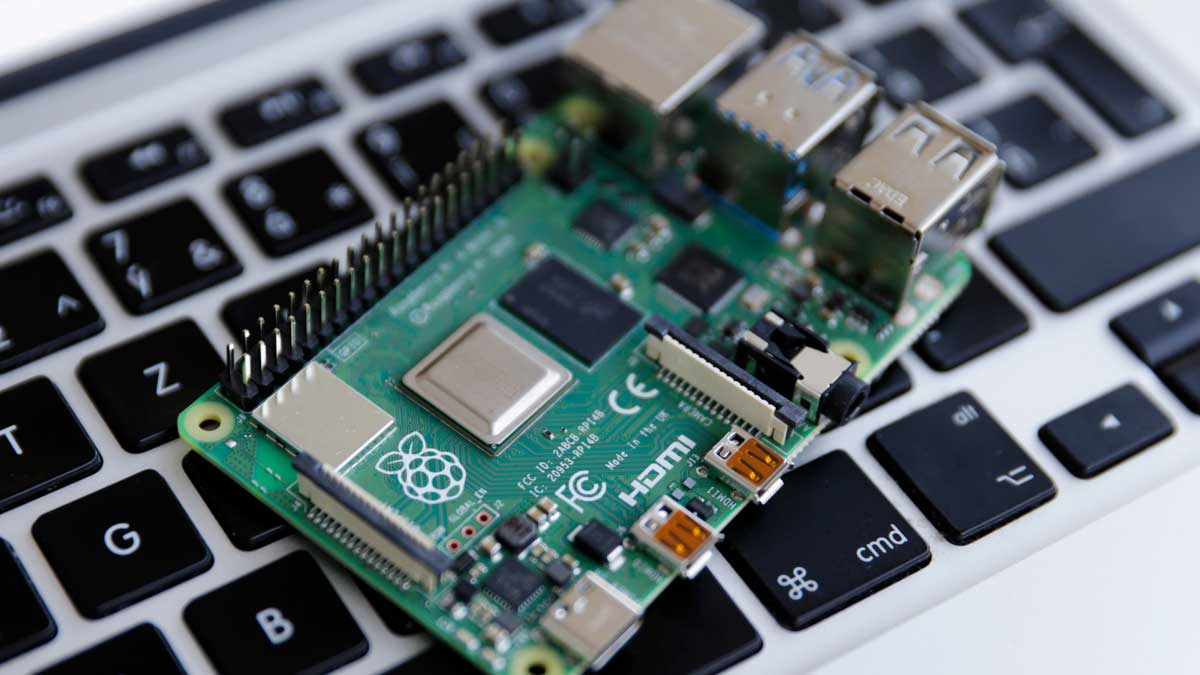Raspberry Pi 4 Revision Fixes USB-C Compatibility Problem
Prior versions of the Pi 4 wouldn't work with high-speed, e-marked USB charging cables.

The Raspberry Pi 4 is the most powerful Pi yet, but the $35, single-board PC has been plagued with a small USB-C compatibility issue since it launched last year. That problem should now be fixed in newly-produced versions of the board, as reported by The Register.
The problem had to do with the Pi 4's USB Type-C port, which it uses to receive power. The way that the port was constructed meant that it would not work with high-speed, "e-marked" cables. We tested a wide number of cables to see which would work, but found that most cables did not have any issues.
- Learn more by reading our Raspberry Pi 4 Review
- Find out how to overclock the Raspberry Pi 4
- Tested: 10+ Raspberry Pi 4 USB-C Cables That Work
In short, if you have a USB 3.1 5 or 10 Gbps cable, chances are that it it is "electronically marked" while USB 2.0 cables are just fine. The high-speed cables require two pull down resistors (see resistor color codes) on the Type-C port, because they use two lines to talk to the system. The original Pi 4 had only one resistor so these cables won't work with it. Considering that the Pi 4's USB-C port is only usable for charging, chances are that you wouldn't want to use a high-speed data cable with it anyway.
However, if you just happen to have high-speed USB Type-C cables lying around, you will now be able to use them to power your Raspberry Pi 4, if you have one of the newly-revised units that are selling now.
Unfortunately, it's not easy to tell whether you're getting one of the new Raspberry Pi 4 units before you buy it. In a quick look online, we didn't see any companies touting the new version.
We reached out to Raspberry Pi CEO Eben Upton to ask how users can tell whether they're purchasing a new revision board or an old model, and he said that the best way to tell is by testing the board with an electronically marked cable to see if it works. Presumably by the time you're doing that test, you've already bought your Pi so your best bet is to just assume that any new Raspberry Pi 4 you buy still has the compatibility problem.
However, all newly-manufactured Raspberry Pi 4s have the fix so eventually all the old inventory will be gone. If you're looking at getting into tinkering with a Raspberry Pi, check out our guide on how to set up your Raspberry Pi for the first time.
Get Tom's Hardware's best news and in-depth reviews, straight to your inbox.
Niels Broekhuijsen is a Contributing Writer for Tom's Hardware US. He reviews cases, water cooling and pc builds.
-
Mr5oh I'm glad they fixed it, but the only way is really to test it with a cable? I've been avoiding the 4 primarily because of the USB C cable issue, and secondly because I'm not a fan of the mini HDMI ports. "Stuck" using the 3B for a little longer I guess.Reply
On the bright side we didn't have to wait for a 4B for a fix I guess... I'll give them credit for that. -
Optix1974 Not to nitpick too much, but just FYI, this fix is on the model B. The model A hasn't come out yet (who knows if they'll even make one). Models aren't the same as revisions. The A models are usually stripped down versions, relatively few are sold. In fact, if you look closely at the PCB in the photo you'll see that is says RPI4B in several places.Reply -
Mr5oh ReplyOptix1974 said:Not to nitpick too much, but just FYI, this fix is on the model B. The model A hasn't come out yet (who knows if they'll even make one). Models aren't the same as revisions. The A models are usually stripped down versions, relatively few are sold. In fact, if you look closely at the PCB in the photo you'll see that is says RPI4B in several places.
Nope I messed that up entirely. I was thinking of the "+" models. As they usually release B+ models, and technically A+ models as well. I was thinking new model, just didn't have it right. Glad you caught it. -
evnglst "Considering that the Pi 4's USB-C port is only usable for charging, chances are that you wouldn't want to use a high-speed data cable with it anyway."Reply
This is not true. The Pi4 can not only be powered by a laptop or an iPad, but it can communicate directly with the powering device, by configuring the USB-C port as a network device.
https://www.hardill.me.uk/wordpress/2019/11/02/pi4-usb-c-gadget/
Some incredibly useful workflows can come from this, as Tech Craft shows here:
IR6sDcKo3V8:413View: https://www.youtube.com/watch?v=IR6sDcKo3V8&t=413s
